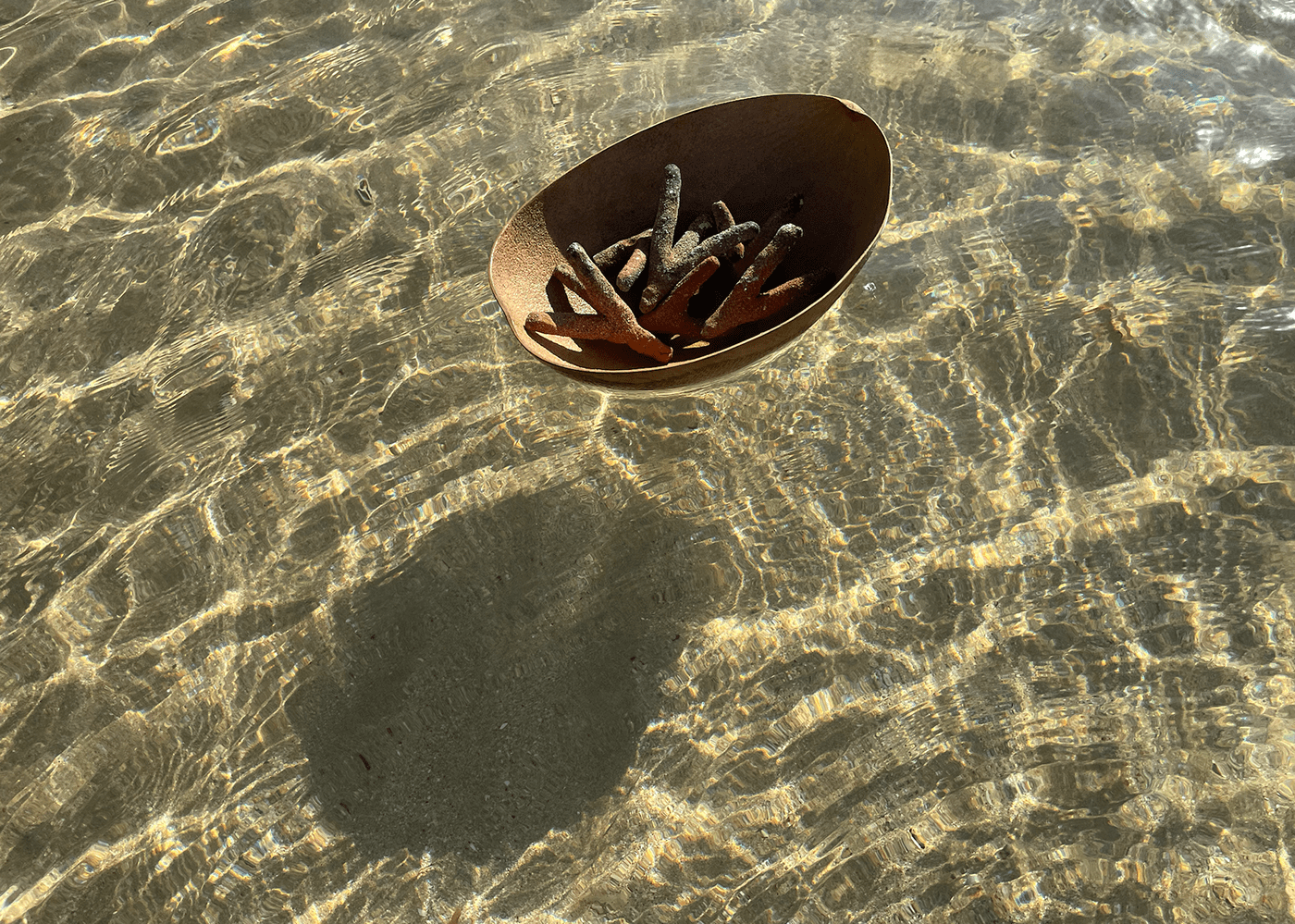
Ceramic pieces integrated into the seagrass ecosystem with the local organisms.
The Path to Greener Waters
Green Product Award Nominee
Rooted in biological system design, the project serves as a model for eco-systems rehabilitation through ancestral knowledge. Weaving culture and conservation to aid the seagrass meadows that are frequently damaged by recreational activity and climate threats.
This project impulses the ecosystem’s resilience with a material structure that serves as the anchor for the plant’s roots and attracts biodiversity. The first design intervention was on the coastal region of Cabezas de San Juan, Puerto Rico. The fragmented seagrass meadows are bridged with river-harvested ceramic pieces, elaborated with methods from indegenous Caribbean cultures that are rooted in native natural cycles.

Elaboration of the pieces in between the river and the sea. Luquillo, Puerto Rico
Re-Awakening
Engineered Naturals
Re-Rooting
System thinking
LO-TEK

Material recollection in the Naguabo River, Puerto Rico. using traditionally elaborated Higüera tools.
WHAT
River-harvested clay, structures are elaborated to anchor the seagrass rhizomes as they grow. While also attracting biodiversity by the algae adhered to the surface of the pieces. As the organisms feed on the algae, they defecate on the substrate and boost the growth of the plant. The process of harvest, elaboration and integration provides cultural re-awakening and connection to natural cycles. Weaving Biology, education, culture and engineering through matter.

Collaborators, traditional tools, biological study, traditional technologies, product visualization.
WHY
This project seeks to transition from a detached ecology to an inherited ecology. Focused on one of the most biodiverse and carbon sink sub-strates ecosystems in the ocean. The Seagrass bed meadows, specifically those populated by the slow-grow-ing plant Thalassia testudinum, also known as turtle grass, that are in de-cline due to recreational, commercial vessels and activity (Kenthworth, 2017) and natural catastrophes. The resilience of both ocean and coastal ecosystems is highly influenced by the seagrass bed ecosystem, serving as a link and passage for organisms, nutrient ex-change, and 10% carbon storage in the ocean.

Ceramic pieces outside of kiln
HOW
Design of a system which integrates indegenous Caribbean knowledge and technologies as a model to rehabilitate ecosystems. Also driven by deep understanding and connection to biological complex systems. The materials are harvested from the natural cycle of nutrients that trace a path from the mountain to the sea.

Pieces where transported using the Higuera.



Designing systems for integration, is a model for using matter as a bridge between human positive interaction with the Planet and cultural re-awakening. Generating connections that transcend sustainable education. Insisting to be in flow with natural cycles rooting our system of belief to holistic ecologies and sustainable behaviour. It is the respect and understanding of the indigenous peoples that we have inherited, their legacy is passed down by the ecosystems that are still resilient and thriving today.
Because a community is not species monotonous, a balanced ecosystem is complex and works through hyperconnected symbiosis. The efforts of this project for this matter, go into bridging both ecosystems and human consciousness.

